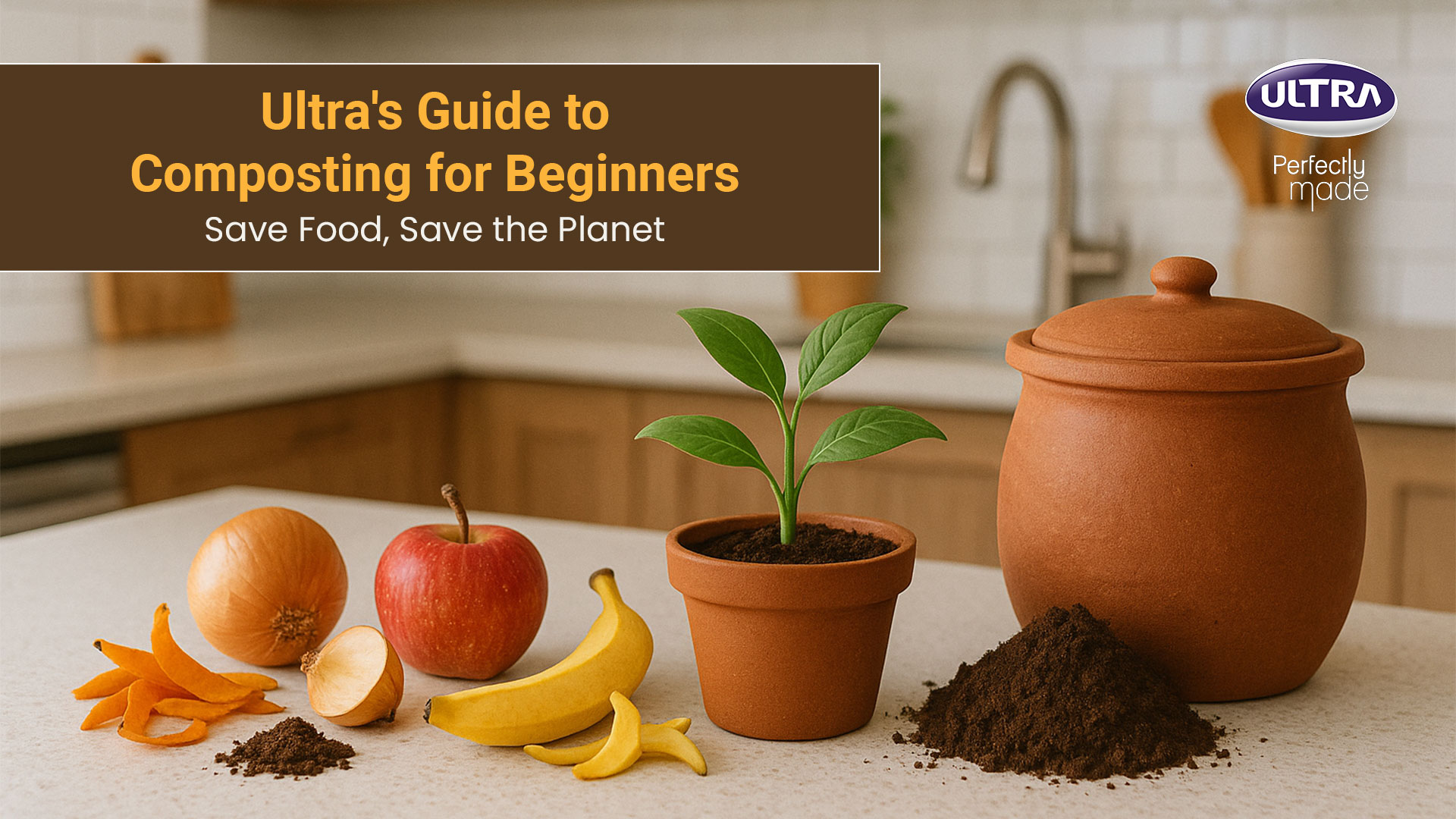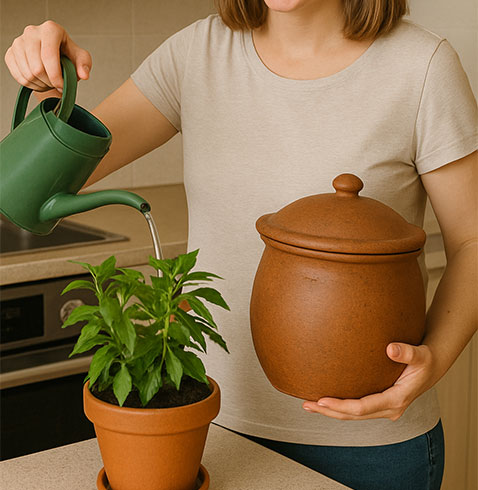
Ultra’s Guide To Composting For Beginners – Save Food, Save the Planet
Every time we peel a potato, cut vegetables, or brew a cup of tea, we generate organic waste, most of which gets thrown into the bin and forgotten. But this kitchen waste has the power to enrich the earth. Composting is a simple, natural process that transforms everyday food scraps and garden waste into nutrient-rich soil. It’s an eco-friendly habit that not only reduces landfill contribution but also nourishes your plants and garden naturally.At Ultra, we believe even a small compost bin in your kitchen or balcony can create big change for the planet. In this beginner-friendly guide, you can walk through the steps of composting athome, helping you turn waste into a valuable resource.
Setting Up Your Compost Station
You don’t need a big garden or fancy gear to get started. Just pick a cool, shady spot—be it on your balcony, backyard, or under your sink. Choose a sturdy and breathable earthen pot. Start with dry sticks or coconut husk at the bottom to absorb moisture. Then add a scoop of garden soil or old compost to activate the process. Keep a separate container near your chopping area so daily scraps go straight into the bin, making composting part of your kitchen routine.


The Perfect Compost Recipe
Think of compost as a balanced diet for microbes. They need two things –
“greens” (wet, nitrogen-rich items like fruit peels, coffee grounds, and veggie
scraps) and “browns” (dry, carbon-rich items like newspaper, cardboard, and
dried leaves). The ideal mix is 1-part greens to 3-parts browns. Chop large
items to help them break down faster. Avoid dairy, meat, oily food, or synthetic
materials as they’ll slow the process and attract pests. Always cover new
greens with a layer of browns to keep flies and smells away. With the right
ingredients, your compost will decompose cleanly and efficiently.
Maintaining Your Compost
Your compost is alive! Full of bacteria, fungi, and tiny insects working hard. Help them out by mixing the pile weekly with a stick or garden fork. This adds oxygen, which speeds up breakdown and prevents foul smells. The pile should feel moist, like a squeezed sponge. If it’s too wet, add more browns and if too dry, sprinkle water. During the rainy season, cover the pile with jute or a cloth to protect it while still letting it breathe. Over time, you’ll feel warmth inside, which is a sign that your compost is cooking beautifully.


Harvesting The Compost
In around 2 months, your compost will be ready. It’ll look dark, crumbly, and
smell like fresh earth. There should be no visible food scraps left. Sift the mix to
remove any tough bits, and reuse those in your next batch. Use your
homemade compost to enrich plant pots, kitchengardens or lawns. It
improves soil texture, holds moisture, and feeds plants naturally over time.
You can even make compost tea to water your plants. With this, you reduce the
need for store-bought fertilizers and enjoy healthier, more
flavourful homegrown veggies and herbs.
Small Steps, Big Impact
Composting may seem like a small step, but its impact is powerful. With something as humble as an earthen pot, you can transform everyday kitchen waste into a valuableresource that feeds the soil, supports your plants, and reduces your carbon footprint. It reconnects us with the natural cycle of life. So, take the first step today, compost your scraps,and become a part of the growing community working to save food and save the planet.Sometimes, it just starts with one compost bin and a little care.


